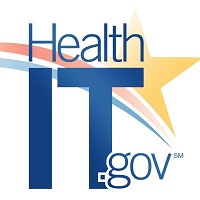 By Tracy Okubo and Kenneth Mandl, ONC
By Tracy Okubo and Kenneth Mandl, ONC
Twitter: @ONC_HealthIT
Because of advances in interoperability, it’s becoming increasingly common for people and their healthcare providers to access and share information from electronic health records (EHRs) using apps. Could this same approach allow large-scale data sharing between healthcare provider organizations, payors (Medicare, Medicaid, and private insurers), or public health officials? An app providing shared insights into a common dataset could transform the way value-based care is delivered and measured.
Hospitals could share subsets of EHR data with payors while using the system to gauge their own performance in terms of patient safety, quality, and value of care. Payors, in turn, could share claims data. By analyzing data from both EHRs and payor claims, it would be possible to discern trends in healthcare processes, outcomes, and costs, reflecting what is happening at the population-level.
A version of that app exists today, thanks to the SMART-PopHealth app developed at Boston Children’s Hospital using a two-year, $1 million grant awarded in 2018 through the Leading Edge Acceleration Projects (LEAP) in Health Information Technology (Health IT) funding opportunity. LEAP supports innovation to address emerging challenges and a way to advance interoperability in health IT.
Building on Success: SMART on FHIR
As part of the Strategic Health IT Advanced Research Projects (SHARP) program, ONC previously awarded $15 million in April 2010 to the Computational Health Informatics Program (CHIP) at Boston Children’s Hospital. This award was for the development of universal application programming interface (API) called Substitutable Medical Applications, Reusable Technologies (SMART). The goal was to enable EHRs to behave similarly to smartphones. By combining the SMART APIs with the emerging Health Level Seven (HL7®) Fast Healthcare Interoperability Resources® (FHIR®) standard, SMART on FHIR now supports apps (including iOS and Android apps) that run universally on health IT systems that access and use data in individual EHRs.
The SMART on FHIR API quickly took off, and health IT developers began building SMART on FHIR into their products to provide people access to their health records, regardless of which health system they belong to.
Taking a LEAP: SMART-PopHealth
The goal of this LEAP project was to build on established momentum and develop a system for accessing and analyzing, at scale, data on whole populations rather than one patient at a time. The population health app builds on the team’s more recent work in defining an API called the SMART/HL7 FHIR Bulk Data Access API.
The FHIR Bulk Data Access API is the population-level counterpart of SMART on FHIR that is used in SMART-PopHealth. The output is an easily consumable flat file also referred to as “Flat FHIR.” Existing APIs that use HL7 FHIR work well for accessing small amounts of data, but large exports can require hundreds of thousands of data requests. The FHIR Bulk Data Access API’s standardized data export function makes it easy to extract large amounts of EHR data, and the data format is the exact same everywhere.
Boston Children’s Hospital’s task was to use the Bulk Data Access API to create a seamless data exchange between provider organizations and third parties, using the exchange of EHR and claims data between a provider and a payor as a use case. Toward this end, they designed, developed, and tested a substitutable population health analytics app, SMART-PopHealth, which enables a payor to access permitted data and metrics on covered populations, directly through the API. The SMART-PopHealth app was tested using synthetic data from more than one million patients, representing about 24GB of data.
The Future of SMART-PopHealth
The model of shared payor-provider data made possible with SMART-PopHealth could create a new basis for pay-for-performance, assessment of value-based care, and approaches to quality management. This LEAP in Health IT project helps shift us away from the current reporting model, where providers often send payors an annual report or spreadsheet with summary data. In contrast, SMART-PopHealth presents data on an ongoing basis in a live, interactive environment, with permissions to view or download data contractually defined and enforced in the software.
Support for both SMART on FHIR and the FHIR Bulk Data Access API is required by the ONC Cures Act Final Rule by late 2022. The SMART-PopHealth app, being open source, is a prototype that the community can build upon. We anticipate that starting in 2022, analytics apps and tools around the FHIR Bulk Data Access API will begin to flourish.
There are many use cases for FHIR Bulk Data Access APIs by payors, healthcare providers, researchers, vendors of machine learning technology, and public health entities. PCORNet, for example, currently limits participation to institutions that have advanced health IT teams to extract data from EHRs. Because the very same data are needed for other population health activities, the same data would have myriad uses including by public health officials monitoring disease outbreaks, including COVID-19.
Check out detailed information on all the LEAP in Health IT projects.
This post was originally published on the Health IT Buzz and is syndicated here with permission.
